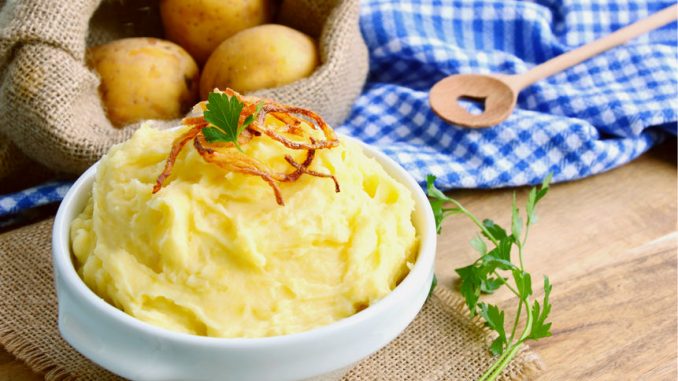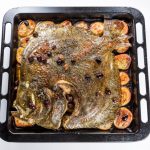
All of us must enjoy mashed potato. It is the classic side dish for any roast dinner. Thanksgiving, Christmas and the Sunday roast would not be a genuine exeprience if we did not have this side. I guess we have all made mashed potato at some point in time. Mind you if you get it wrong it can be a stodgy mess!
Let’s talk about potatoes. If you are living in Europe then the best floury potatoes for the job are King Edwards, Desiree or Maris Piper. In the USA, use Yukon Gold or one of the Russet types. In Australia use Creme Gold, Creme Royal or Dutch Cream. Waxy potatoes wont work for mashing. We’ve tried and they don’t fit in.
Always use salted boiling water, never unsalted as the taste and texture will not be right. You can add milk/cream to adjust the texture and make it less starchy. Milk or cream helps to thicken it too.
We always use unsalted butter rather than salted butter simply because the saltiness of the mash is more controllable. If you want extra flavour then mashed potato is suitable for other additions like herbs, fresh garlic, cheese (naturally), cream especially sour cream and creme fraiche.
Here we have a standard recipe on how to make mashed potato. We also have other variations which various chefs have come up which will enhance this dish.
[Please note we are an affiliate marketing partner and will make a sales commission if you purchase any items through our affiliate links. Please read our affiliate disclosure]
Serves four.
Equipment:
Ingredients:
- 900g floury potatoes peeled.
- 50ml milk (Optional)
- salt to taste but it will be about a couple of teaspoons.
Preparation:
- Wash the potatoes before peeling and then wash again just to remove any dirt.
- Cut the potatoes into roughly equal-sized pieces so they all cook at the same time.
- Tip them into a large pan of cold, amply salted water which just covers them.
- Bring to a boil. Check they are ready for mashing by inserting the blade of a knife into see how easily it goes in. The softer they are the easier this will be. I know some chefs cut a piece off and eat it to make sure.
- If they are ready, turn down the heat and just simmer until the potatoes are tender, about 5 minutes.
- Drain into a colander, shake to get rid of any excess water, leave about 5 minutes. This allows the water to drain off and the steam to disappear.
- Return the spuds to the hot pan for mashing.
- This is where your arm gets exercise because the masher needs to crush the potato to pulp if you know what I mean. In some cases chefs use a ricer or a mouli which are devices for crushing and mushing other veg. but can be adapted for this purpose. The level of mashing is a matter of choice. I prefer it with some lumps rather than the sort which looks like baby food.
- Not everybody adds milk but if you do, pour in half the milk, beat well with the masher or a wooden spoon to incorporate into the potato, then repeat with the remaining milk. Season to taste, and serve immediately.
Variants Of Mashed Potato
[1] Buttery Mashed Potatoes
- 90-120g unsalted butter, cut into cubes
If you want then add some butter to the pan and mash it into the potato until is smooth. Add some salt and freshly ground black pepper just to continue the flavour. You can also add some nutmeg as Jamie Oliver suggests but that too is a matter of taste.
[2] Parmesan and Truffle Mash
In Jamie Oliver’s first book The Naked Chef one of his trusted mashed potato recipes called for this flavour and it does seem to work really well.
- 55g/2oz unsalted butter
- 2-3 handfuls of grated parmesan cheese
- 1 tbsp truffle oil
All these ingredients are added at the point of mashing the potato.
[3] Horseradish Mash
For a more pungent version try this other Jamie Oliver trick. It uses:
- 55g/2oz butter
- 2 heaped tbsp of horseradish sauce or cream
These are added at the point of mashing. If you have raw horseradish then use about 1 tablespoon and also add 2 tbsps of double cream.
Season all with salt and freshly ground black pepper as required.

Leave a Reply